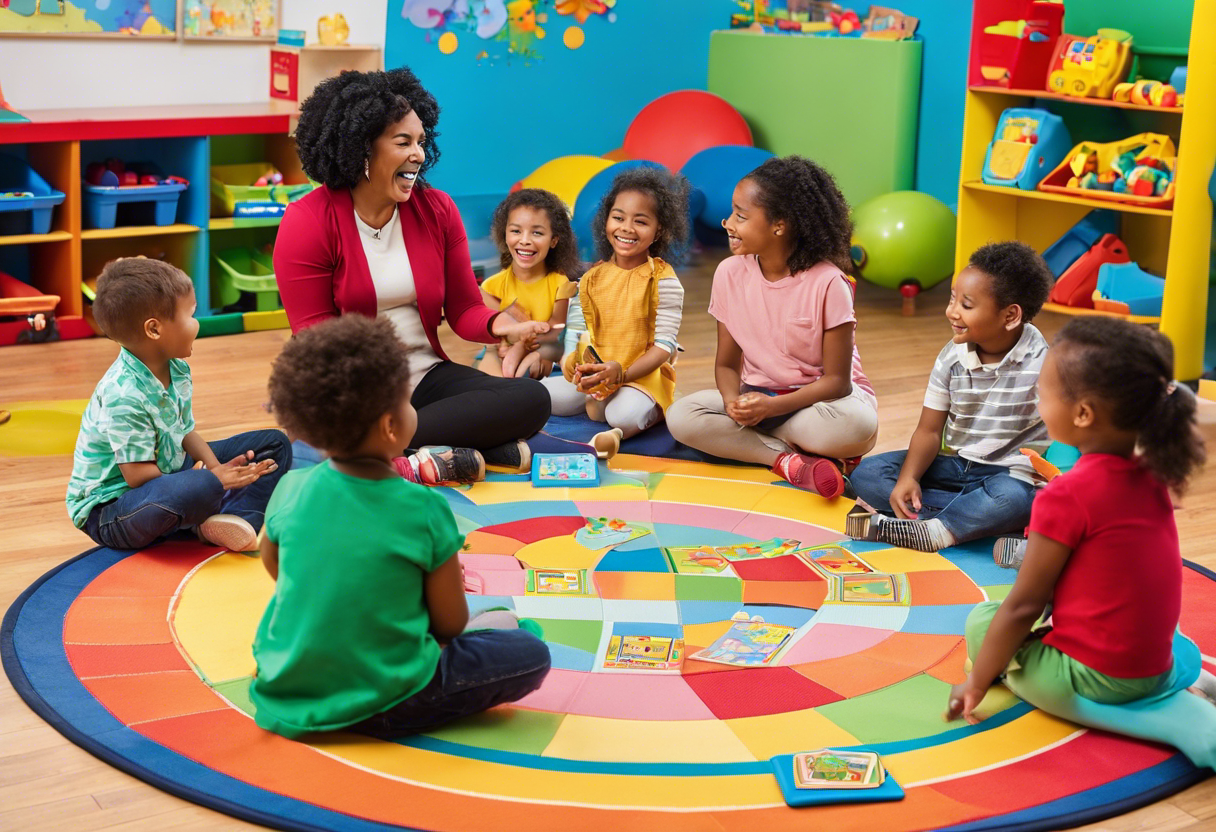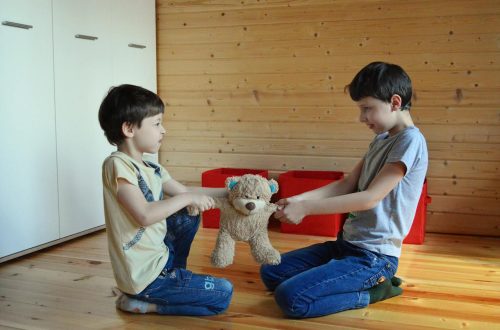
The Complete Guide to Toddler Parenting: 40+Tips You Need to Know
Understanding Your Toddler’s Developmental Milestones

As toddlers grow, they reach a series of developmental milestones that serve as checkpoints for their physical, emotional, and cognitive growth. Recognizing and supporting these milestones is crucial for parents. During the ages of 1 to 3 years, toddlers typically begin to:
- Walk and Run: Gain the ability to walk independently, which progresses to running and climbing. This physical development necessitates safe spaces for exploration.
- Fine Motor Skills: Develop fine motor skills, which involve the coordination of small muscles in movements—typically involving the synchronization of hands and fingers—with the eyes. These skills are evident as they learn to hold utensils, stack blocks, and scribble.
- Language: Experience explosive language development, moving from babbling to forming words and simple phrases. Encouraging conversation and reading to your child can aid this area.
- Social Interaction: Show interest in social interaction. They may play alongside peers (parallel play) and start learning basic elements of sharing and cooperation.
- Cognitive Skills: Display increasing cognitive skills as they begin to solve simple problems, recognize patterns, and engage in imaginative play. Providing a variety of stimulating toys and activities can support this learning.
- Emotional Regulation: Start to exhibit a wider range of emotions and may begin to test boundaries. It is important for parents to model healthy emotional regulation and provide consistent, caring discipline.
- Independence: Begin to assert independence and may exhibit strong preferences. It is vital to support this development while ensuring their safety and setting appropriate limits.
Parents should remember that each child develops at their own pace and that developmental milestones are guidelines, not strict timelines. If concerns arise regarding a child’s development, consulting with a pediatrician or child development specialist can provide guidance and support.
Establishing Routines for Predictability and Security
When it comes to parenting toddlers, establishing routines is a pivotal aspect that contributes to a child’s sense of predictability and security. Children in this age group thrive on routine as it helps to make their world seem more understandable and manageable. Parents and caregivers should consider incorporating structured schedules for daily activities such as eating, napping, and playtime.
- Consistency is Key: Ensuring that routines are consistent is essential. Try to maintain regular times for meals, baths, and bedtime. This consistency allows toddlers to anticipate upcoming activities and transitions, which can reduce anxiety and resistance.
- Visual Schedules: For young children, visual schedules can be extremely helpful. Using images to represent different parts of the day’s routine could assist in making abstract concepts more concrete for toddlers.
- Involvement in Routines: Involve toddlers in their routines wherever possible. Simple tasks like picking out pajamas for bedtime or helping to set the table can give them a sense of control and participation.
- Flexibility Within Structure: While routines are important, parents shouldn’t be overly rigid. There needs to be flexibility for unexpected events or when the child is showing signs of tiredness or overstimulation.
Moreover, routines should not just be about the “must dos” but also incorporate time for free play and exploration, as these are also crucial for a toddler’s development. Predictable routines paired with responsive care can provide a secure environment in which toddlers can explore and learn about their world confidently and safely.
Communication Techniques for Building Toddler Language Skills

When nurturing language development in toddlers, parents and caregivers can utilize a variety of communication techniques to promote a child’s linguistic abilities. Here are some effective strategies:
- Interactive Reading: Encourage language growth by reading books with engaging pictures and simple text. Ask questions about the story, relate it to the child’s experiences, and encourage them to predict what might happen next.
- Sing Songs and Recite Nursery Rhymes: Incorporate music and rhythm into daily activities. Songs and rhymes increase phonemic awareness and can help toddlers learn new words and sounds.
- Use Descriptive Language: Expand a toddler’s vocabulary by describing your actions and environment with rich, diverse language. For example, instead of saying “Let’s eat,” say “Let’s eat our warm, delicious dinner.”
- Listen and Respond: Pay close attention to the child’s attempts to communicate and provide thoughtful, direct responses to encourage further dialogue.
- Positive Reinforcement: When a toddler uses words or tries to speak, respond with enthusiasm and praise. Positive reinforcement motivates them to continue their efforts in developing language skills.
- Repeat and Expand: If a toddler says a word or a simple phrase, repeat it back and then add to it to build complexity gradually. For example, if the child says “truck,” you might respond with “Yes, a big red truck.”
- Create Opportunities for Communication: Set up scenarios that require the toddler to use language to express needs or desires. For instance, place a desired toy slightly out of reach to prompt them to ask for help.
Parents should remember that each child progresses at their own pace, and these communication techniques should be applied consistently and patiently to foster an environment conducive to language learning.
Fostering Independence While Ensuring Safety

Parenting toddlers involves a delicate balance between encouraging independence and maintaining a safe environment. As toddlers grow, they become more curious and eager to explore, making parental guidance crucial for their development.
To foster independence in toddlers:
- Provide opportunities for choice: Allow toddlers to make simple choices, such as picking their clothes or selecting a snack. This promotes decision-making skills and a sense of autonomy.
- Encourage exploration: Safe, child-proofed areas enable toddlers to explore without constant intervention. Close supervision should still be present to ensure safety while allowing freedom.
- Support problem-solving: Resist the urge to solve every problem for them. Instead, guide toddlers through challenges, such as fitting a puzzle piece in place or navigating obstacles.
- Promote self-care skills: Teach basic self-care, like handwashing or dressing, which strengthens independence and responsibility.
To ensure safety while fostering independence:
- Set clear boundaries: Clearly defined limits help toddlers understand what is safe and acceptable. Consistent reinforcement of these boundaries provides a secure framework within which they can operate.
- Use age-appropriate tools: Provide toys and tools designed for a toddler’s developmental level to reduce the risk of accidents.
- Stay vigilant: Supervise and adjust the environment as needed to prevent potential hazards while allowing the child to learn through experience.
- Teach safety skills: Incorporate lessons about safety, such as not touching hot surfaces or the importance of holding hands when crossing the street.
By striking a balance between independence and safety, parents lay the foundation for their toddlers to become confident and self-reliant individuals.
Discipline and Limits: Striking the Right Balance

Parenting toddlers requires a delicate balance between establishing discipline and setting appropriate limits. It is essential for parents to consistently enforce rules to create a sense of stability and security for their young children.
Establishing Boundaries
- Clearly define boundaries that are age-appropriate and understandable for toddlers.
- Consistency is key. Ensure that rules are enforced the same way by all caregivers to avoid confusion.
- Use simple language to explain the reason behind the rules to foster cooperation.
Positive Discipline Techniques
- Redirect negative behavior by offering acceptable alternatives.
- Use positive reinforcement to encourage desired behavior, such as verbal praise or a reward system.
- Time-outs can be effective if used sparingly and appropriately, keeping the toddler’s age and temperament in mind.
Developing Self-Control
- Create opportunities for toddlers to make choices within set limits to help them learn self-control.
- Introduce simple problem-solving strategies to empower toddlers in managing their emotions.
- Model patience and self-discipline as toddlers often learn by imitating adults.
Communication and Understanding
- Listen attentively to your toddler’s feelings and perspectives to validate their emotions.
- Maintain a calm demeanor when enforcing rules, which helps to mitigate power struggles.
- Use natural and logical consequences that are directly related to the misbehavior to ensure that the lesson is learned.
Finding the right balance between discipline and limits is not about exerting absolute control, but rather guiding toddlers as they navigate through their early years. A nurturing approach coupled with clear boundaries paves the way for toddlers to grow into well-adjusted individuals.
Importance of Consistent and Loving Guidance

Parenting toddlers requires striking a delicate balance between setting boundaries and nurturing with kindness. Consistently providing loving guidance lays a foundation for trust and security, which are vital for a toddler’s development.
When parents and caregivers offer steady and affectionate direction, they establish clear expectations that help toddlers understand the world around them. Consistent guidance teaches young children that rules are stable, which is essential for their sense of safety. It allows them to predict outcomes, giving them the confidence to explore and learn.
Moreover, loving guidance helps toddlers develop self-regulation skills. When they receive patient and empathetic responses to their behaviors, toddlers learn to manage their emotions and reactions in a healthy way. This emotional coaching is crucial as it shapes the neural pathways that will influence their behavior throughout life.
A combination of consistent and loving guidance also fosters positive behavior. Toddlers are more likely to follow directions and exhibit pro-social behaviors when they feel respected and understood. A nurturing approach that includes clear communication, validation of feelings, and age-appropriate explanations cultivates a positive parent-child relationship.
Furthermore, such guidance provides an excellent model for interpersonal relationships. Observing their parent’s consistency and care teaches toddlers how to interact with others respectfully and compassionately. This early lesson in empathy and consideration for others’ feelings is a cornerstone of social development.
In essence, consistent and loving guidance equips toddlers with the tools for emotional resilience, strong relationships, and an intrinsic understanding of right and wrong, which prepares them for the challenges of later childhood and beyond.
Positive Reinforcement: Encouraging Good Behavior

Positive reinforcement is a powerful strategy in promoting good behavior in toddlers. It involves the addition of a rewarding stimulus after a desired behavior is exhibited, with the intention of increasing the likelihood that the behavior will occur again in the future. Parents can employ this technique effectively by:
- Acknowledging and praising specific positive behaviors immediately when they occur. For example, saying, “Great job sharing your toys with your friend!” highlights the behavior and provides immediate positive feedback.
- Using tangible rewards cautiously. Over-reliance on toys or treats can diminish the intrinsic value of good behavior. Instead, rewards like extra playtime or a special activity with a parent can be more meaningful and enduring.
- Setting achievable goals for the child. This allows them to experience success regularly, which reinforces their desire to continue behaving well.
- Remaining consistent with the reinforcement. Inconsistency can confuse toddlers and reduce the effectiveness of positive reinforcement.
It is crucial for parents to maintain a balance between offering praise and avoiding excessive rewards that could lead to dependency on external validation. Positive reinforcement should be seen as an opportunity to teach children the intrinsic rewards of good behavior, such as a sense of accomplishment and the strengthening of the parent-child bond. Through consistent and thoughtful application of positive reinforcement, parents can guide their toddlers towards a pattern of good behavior that lays the groundwork for future social and emotional development.
Managing Tantrums: Strategies for Keeping Your Cool

When faced with a toddler’s tantrum, it’s vital for parents to maintain composure. To effectively manage outbursts and teach emotional regulation, consider the following strategies:
- Stay Calm: Toddlers look to their parents for cues on how to handle intense emotions. By staying calm, parents model the self-control they hope to instill.
- Consistent Responses: Children benefit from consistency. Reacting the same way to similar tantrums helps toddlers learn what is expected of them.
- Acknowledge Feelings: Parents should validate their toddler’s feelings. Acknowledging emotions without giving in to demands can deescalate the situation, for instance by saying, “I see you’re upset because you can’t have the toy right now.”
- Diversion and Distraction: Shifting a toddler’s attention to another activity or object can redirect energy away from the tantrum.
- Set Clear Boundaries: Parents must set and maintain clear, age-appropriate boundaries for their children. Knowing the limits helps toddlers feel secure and understand what behavior is acceptable.
- Use Positive Reinforcement: Recognizing and praising good behavior can encourage a toddler to repeat those actions instead of resorting to tantrums.
- Take a Break: If the situation allows, sometimes the best action is taking a few moments away (in a safe environment) to breathe and compose oneself before responding to the child.
- Confidence in Consequences: Adhere to established consequences for inappropriate behavior calmly and without anger. This shows toddlers that their actions have predictable outcomes.
- Seek Understanding: Sometimes tantrums stem from unmet needs or the inability to communicate. Identifying the root cause can help in addressing the child’s frustration.
- Teach Problem-Solving Skills: Encouraging toddlers to express themselves using words and to think of solutions can reduce the frequency of tantrums over time.
Employing these strategies can assist parents in handling tantrums with patience and poise, promoting a harmonious environment conducive to learning and growth for both parent and child.
Building Social Skills: Encouraging Play and Interaction

Developing social skills in toddlers is essential for their emotional intelligence and future interactions. Parents hold the key to nurturing these abilities through guided play and fostering opportunities for their children to interact with others. Play is the primary means by which toddlers learn social cues and the give-and-take of interactions.
Structured Play Activities
Structured play activities provide a framework within which toddlers can learn social norms. Parents should:
- Initiate games that require taking turns, reinforcing the concept of patience and sharing.
- Use role-play to encourage empathy, by having them pretend to be different characters with diverse emotions and reactions.
- Organize playdates with children of a similar age to expose toddlers to social situations in a controlled environment.
Unstructured Play
During unstructured play:
- Allow toddlers to express themselves freely and lead in playtime decisions, which fosters independence and confidence in social settings.
- Observe interactions with others to understand their social strengths and areas for improvement.
- Offer subtle guidance rather than direct intervention whenever possible to promote self-regulation in social scenarios.
Modeling Behavior
Toddlers emulate the behavior they observe. Parents should:
- Exhibit positive communication skills themselves, such as active listening, eye contact, and polite manners.
- Demonstrate how to express emotions in a healthy way, providing them with the language and actions they can imitate.
Encouraging Inclusion
To further develop social skills:
- Teach toddlers about inclusivity by involving them in group activities and encouraging them to play with different peers.
- Acknowledge and praise positive social behavior such as sharing, cooperating, and being kind to reinforce these actions.
By focusing on play and interaction in a supportive manner, parents guide their toddlers toward developing robust social skills that will serve as the foundation for their future relationships.
Self-Care for Parents: Staying Energized and Patient

Parenting a toddler requires a wellspring of energy and a deep reservoir of patience. It is vital for parents to prioritize self-care to manage stress and maintain a sense of balance. Here are essential self-care strategies for staying energized and patient:
- Establish a routine: A predictable schedule benefits both the child and parent, providing structure and reducing daily stress.
- Exercise regularly: Physical activity boosts energy levels and improves mood. Even a short daily walk can make a significant difference.
- Eat a balanced diet: Proper nutrition helps maintain energy throughout the day. Focus on consuming whole foods and avoiding excessive sugar and caffeine.
- Prioritize sleep: Sleep deprivation affects mood and patience. Aim for 7-9 hours of good quality sleep each night.
- Practice mindfulness: Mindfulness techniques like deep breathing, meditation, or yoga can reduce stress and enhance patience.
- Take breaks: Short, regular breaks away from parenting responsibilities can recharge parents’ batteries. Consider activities that are personally refreshing.
- Stay connected: Maintain relationships with friends and family for emotional support. Socializing can provide a necessary outlet for stress.
- Set realistic expectations: Acknowledge that perfection in parenting is unattainable. Be kind to yourself when things don’t go as planned.
- Ask for help: Don’t hesitate to seek help when overwhelmed. Delegate tasks and share parenting duties with a partner or support network.
Self-care should not be viewed as a luxury, but rather as an essential component of effective parenting. Parents who take care of their own well-being are better equipped to meet the demands of raising a toddler with consistency and compassion.



